Scanning the notes I penned while playing HQWW2 this week, I can’t find anything resembling an aggro anecdote. There’s no chunk of shorthand reminding me of that bit in Mission 4 of the US campaign when I spent an absorbing half hour hunting a Tiger with nothing but a green bazooka team and a singed/scared Greyhound, or that spell in Mission 2 of the Brit Campaign when my Red Berets, using smoke, pluck, and Sten guns, overran a German position, then used the Pak 40 they captured to see off a counterattack involving a Panzer IV and several halftracks.
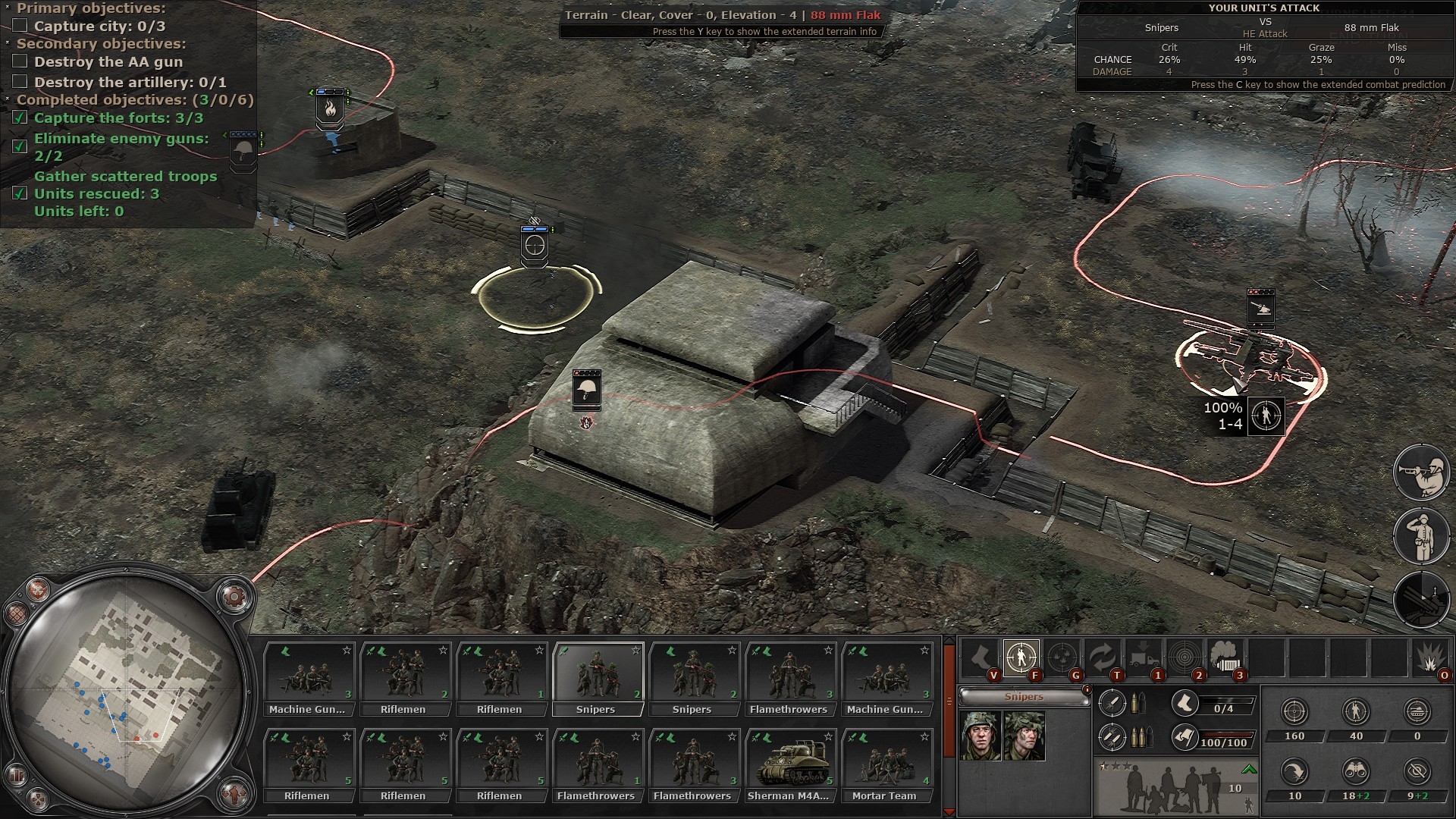
There’s no mention of these things because they didn’t happen. HQWW2 is, I regret to report, much better at producing happy preoccupation than vivid battle memories or bona fide excitement.
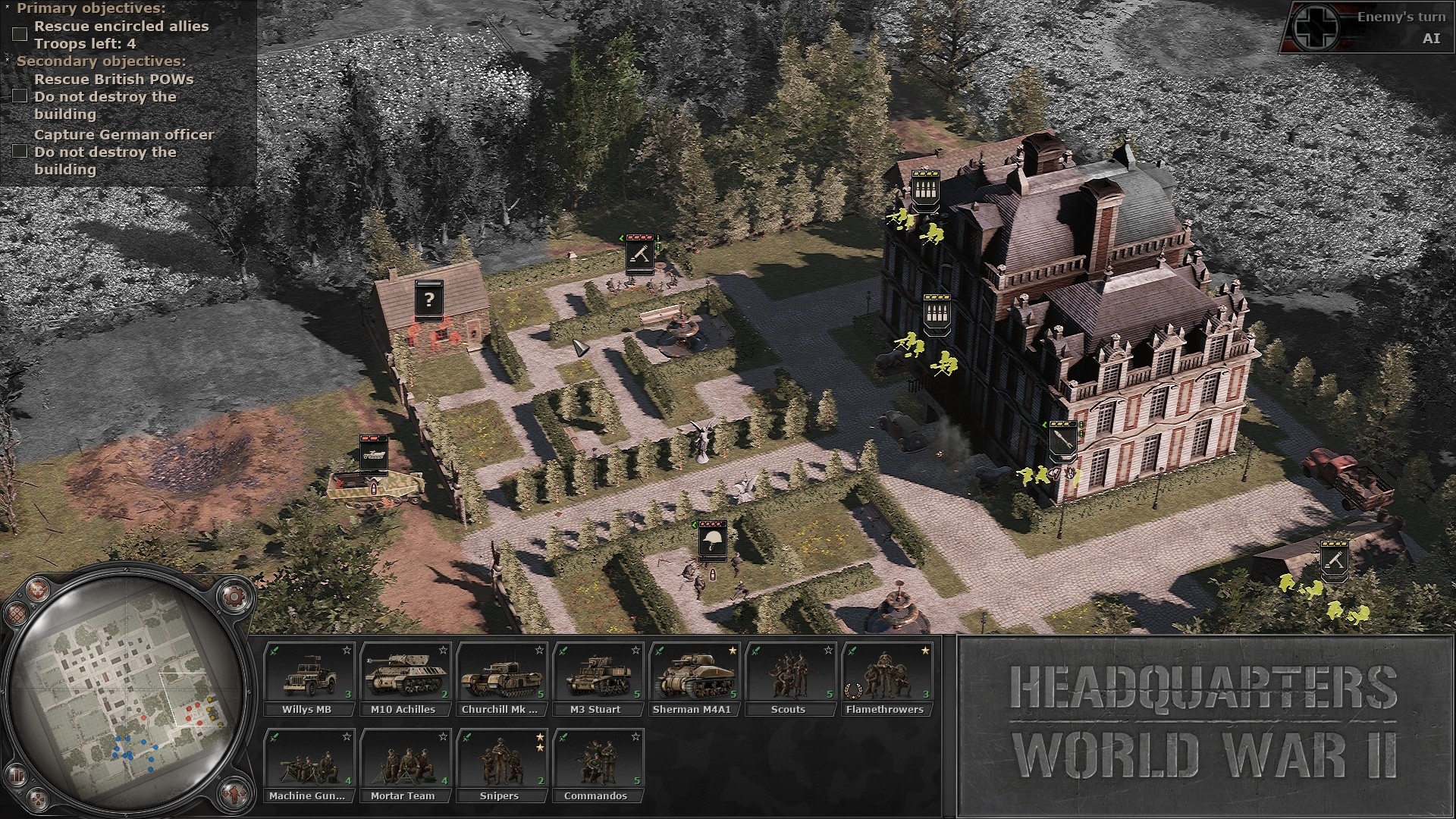
Link up with the surrounded paratroopers… neutralise the enemy MGs… capture the chateau… collect the wayward supply drops… in campaign mode, Starni/Slitherine’s latest hurls RTS-style primary or secondary objectives at you every ten minutes or so, and yet most missions boil down to basically the same thing: edging a mixed force across a FoW-fleeced map, exposing and eliminating fairly static foes as you go*. As no turn passes without multiple thought-provoking movement or targetting dilemmas, it would be unfair to use the B Word – “boring” – to describe HQWW2, but scintillating company it is not.
* If you’re lucky, you might also get to repulse a counterattack once you’ve cleared a map

Mechanically, the newcomer has a fair bit in common with the dusty but trusty Battle Academy 2. Units occupy squares rather than hexagons, turns are free of fussy phasing, and combat odds are clearly communicated. If, as I am, you’re a BA2 admirer, it probably won’t be long before you find yourself wondering why the devs didn’t steal more tried and tested mechanisms from their touchstone.

In most of the areas where Starni abandons BA methodology, the changes aren’t wholly successful. Take order issuing for example. In Slitherine’s 2014 release, a clever, context-sensitive cursor largely sidelined the keyboard. In HQWW2, for no good reason, the player is forced to search-out panel buttons or shortcut keys to trigger things like suppression fire and smokescreen sowing.
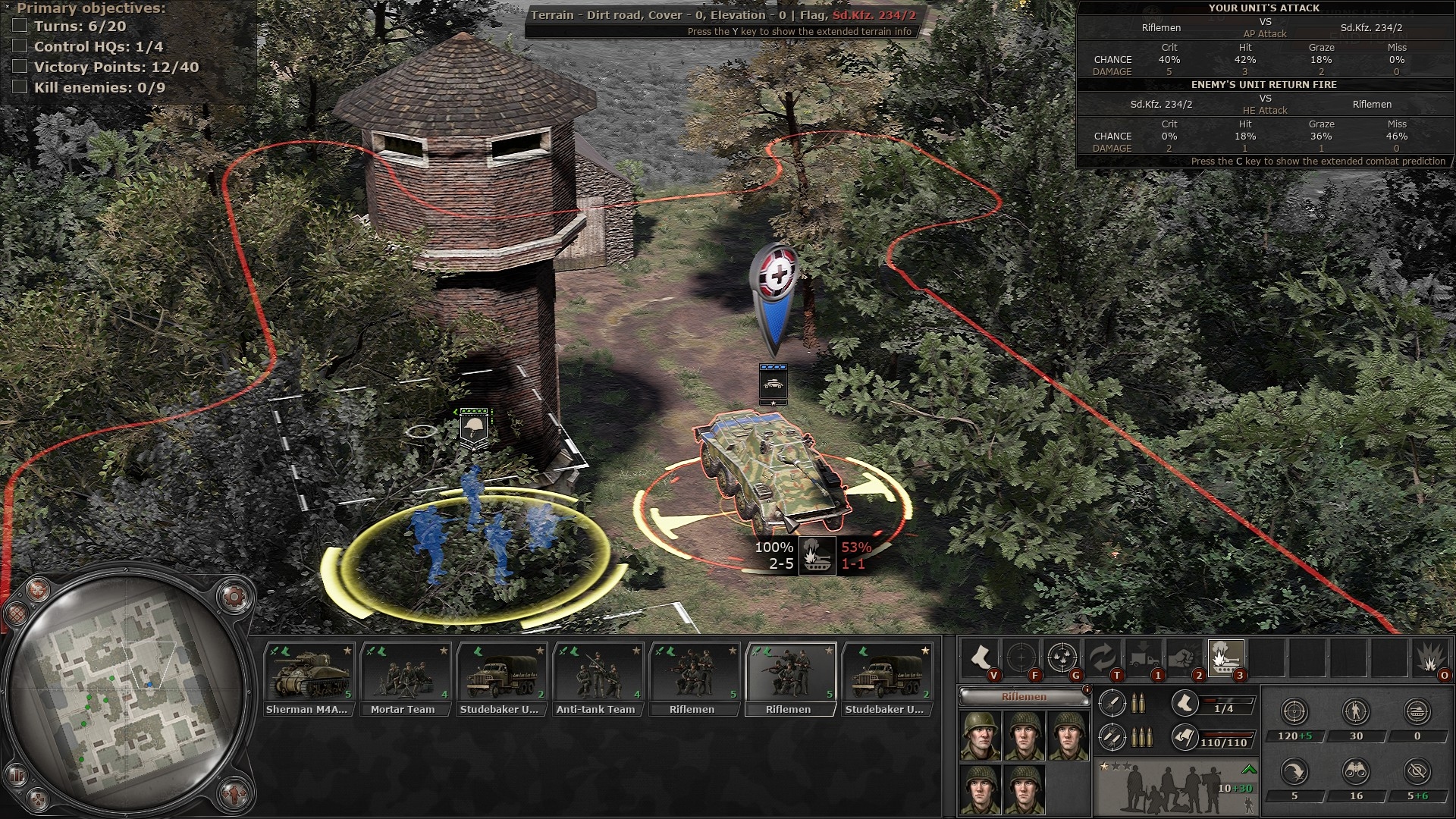
A new crew-centred approach to AFV damage modelling (loss of specific crewmen impacts things like movement range, morale, spotting, and accuracy) and a pretty generous reinforcement mechanic ensures HQWW2’s armour clashes aren’t anywhere near as plausible as BA2’s. At standard difficulty, one-shot kills of undamaged tanks are almost impossible. In my last skirmish game I watched a King Tiger land two hits on one of my bog-standard Shermans. The hits reduced the M4 to a single crewman/HP – damage that didn’t stop the medium tank from moving or firing, or returning to full health with the help of the magic reinforcement button the following turn.

Immobilised and gun-disabled angry houses are a common sight on BA2 battlefields. In the closest thing we have to BA3, you never encounter the latter and very rarely see the former. Bizarrely, someone at Starni decided to link immobilisations to a specific ‘hit track’ attack, and only assign the ‘hit track’ special ability to a handful of units. Hetzers and Pak 43s can immobilise targets, but Panthers and Tiger IIs can’t? On what planet does that make sense?

Do more informative movement overlays (When pondering manoeuvres in HQWW2, you can see weapon range and destinations that will trigger overwatch attacks) fully compensate for the fact that the newcomer’s lavish graphics make reading terrain harder that it was in BA2? I’d argue ‘no’.
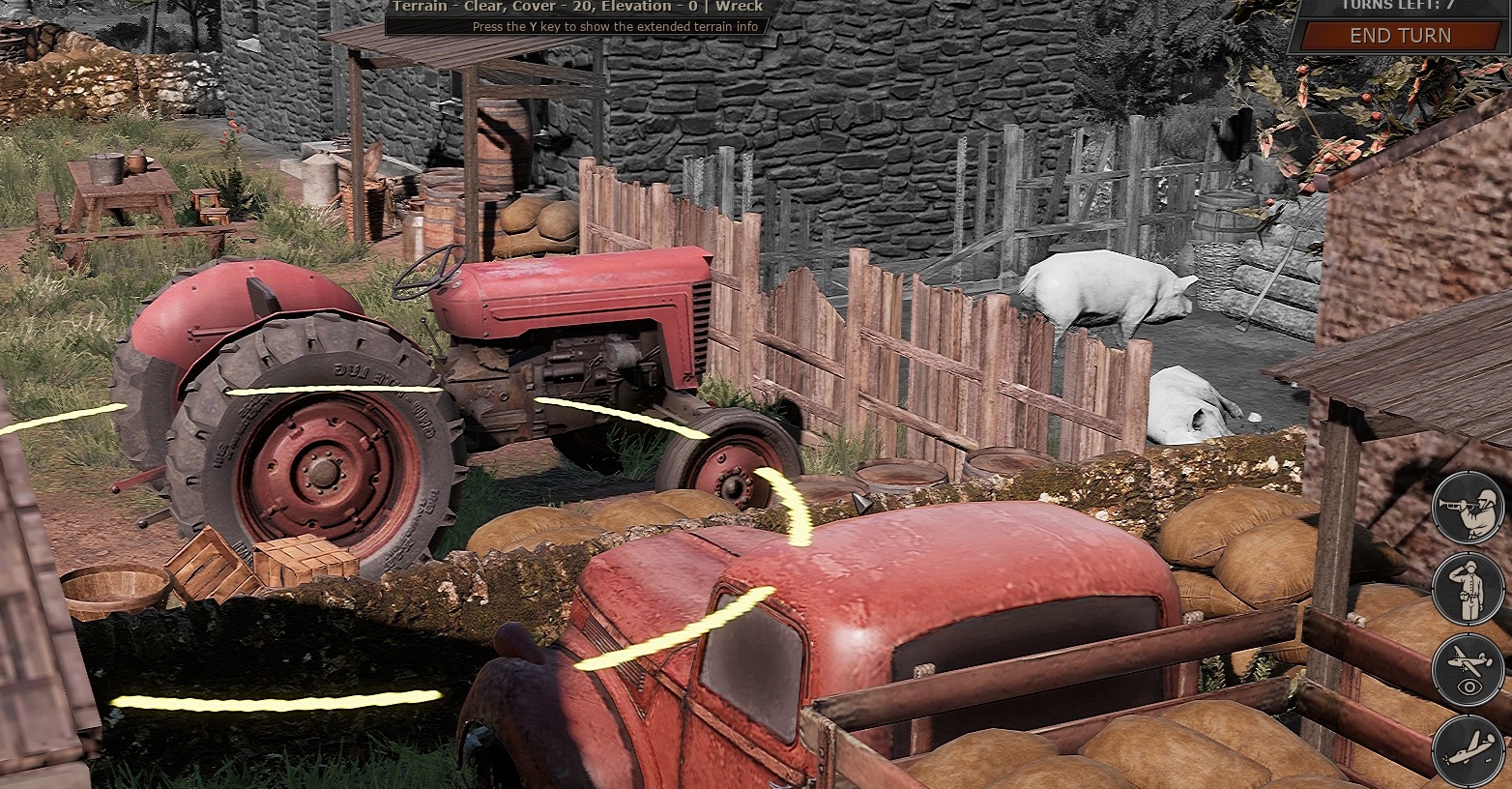
Speaking personally, I’d rather have terrain I can parse at a glance than polygonal apples on apple trees, animated pigs in pig sties, and legible text on tractor tyres. When light levels are low, it’s sometimes necessary to mouse-scout the battlefield in order to properly understand what you are looking at.
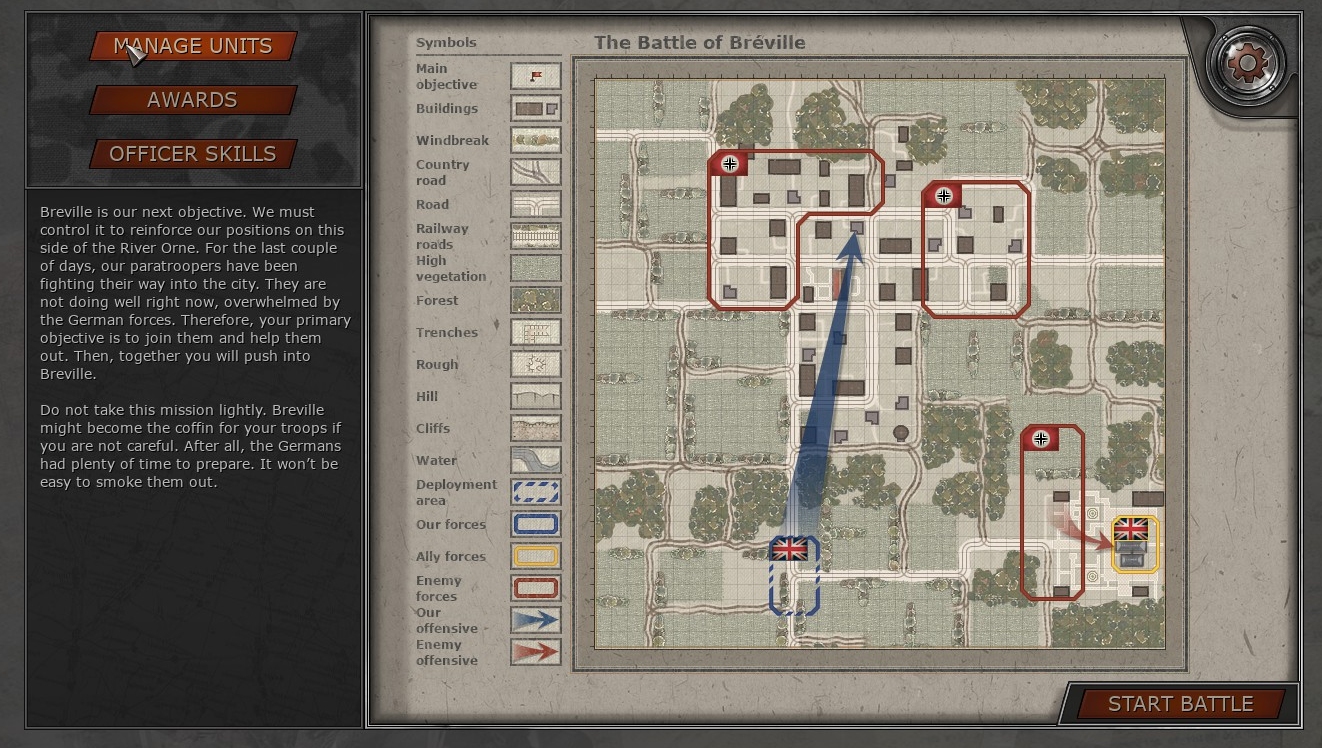
The Kievite coders have, it has to be said, had a game stab at enriching BA2’s unambitious linear campaigns.
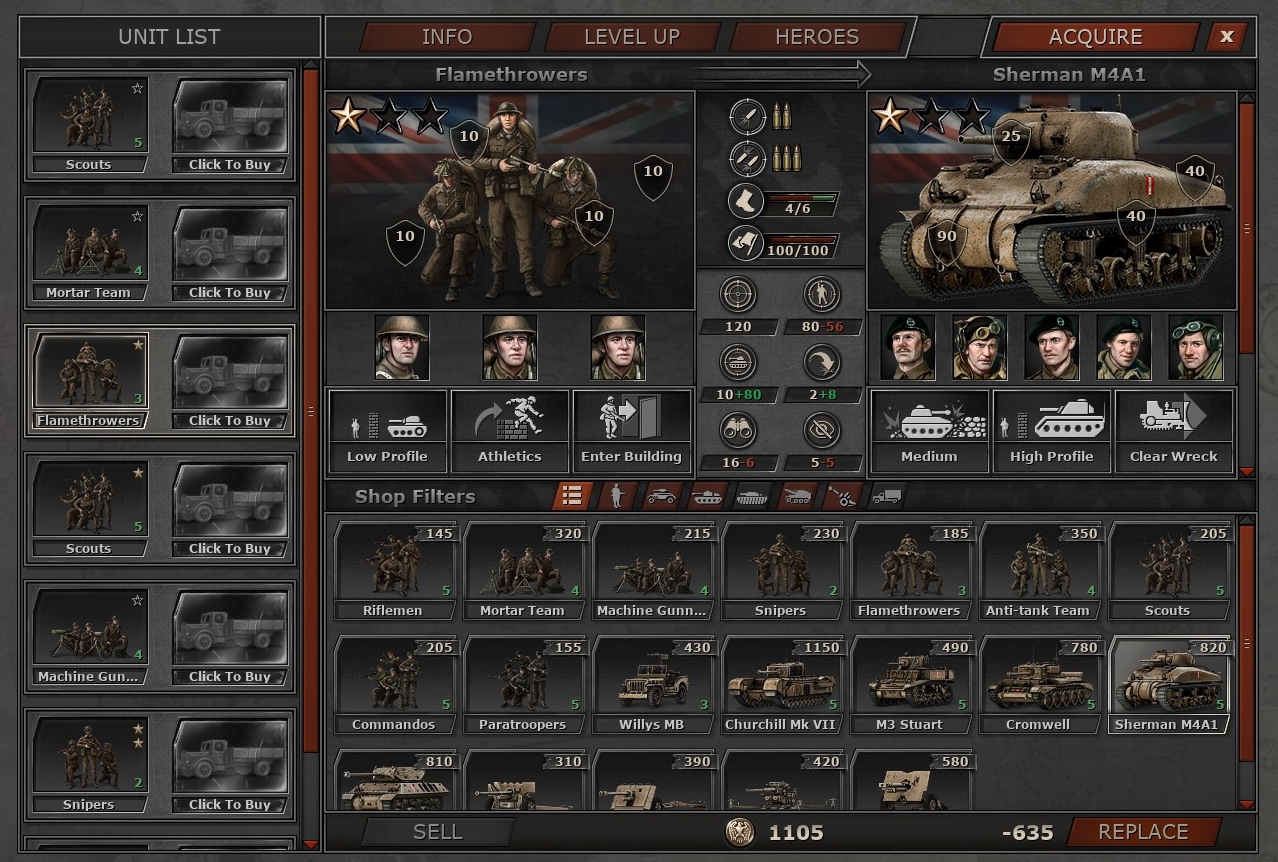
HQWW2’s three nine-mission scenario sequences might be as straight as Panzerfaust tubes, but core force cultivation and customisation, hero assignment, and officer skills choice provide a modicum of intermission interest and replay incentive. While expensive victories hurt less than they might because lost core force units are instantly replaced with inexperienced substitutes, regularly relying on greenhorns makes the occasional difficulty spikes in the campaigns that bit harder to overcome.
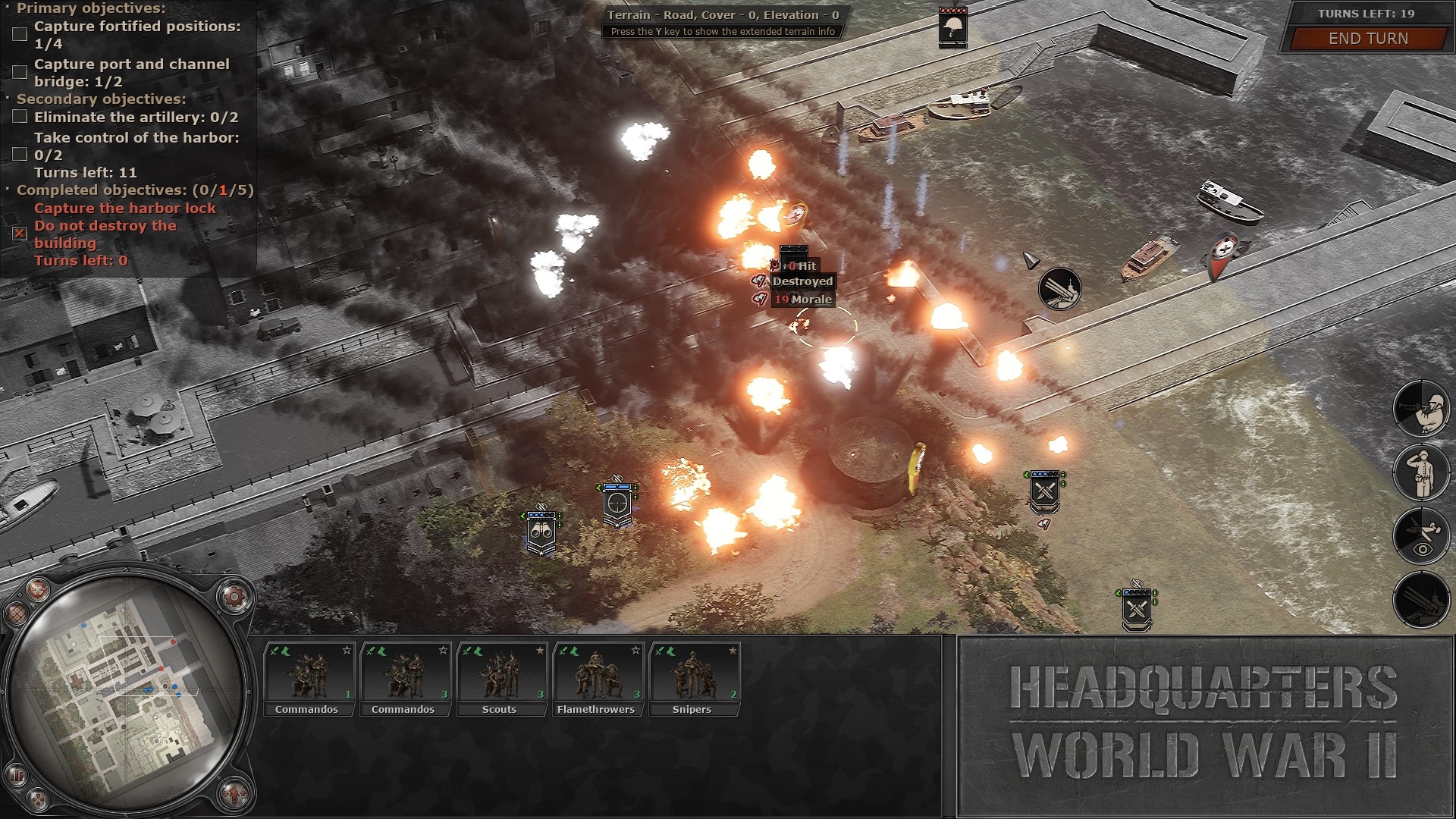
Lullaby-ed by the combination of familiar setting and familiar mechanics, Ignatius, my grumpy shoulder gnome, has spent most of the past week asleep. On the rare occasions when he hasn’t been filling my lugholes with Zs, he’s given HQWW2’s weak vocal cues, unsubtle AI, occasional crashes, and disappointing skirmish mode, deserved tongue-lashings. How hard can it be to check whether a target has been destroyed before triggering a “Not enough! Hit them again!” cue, or persuade the CPU’s smoke mortar equipped tanks to shroud themselves when in trouble? Too hard, apparently.
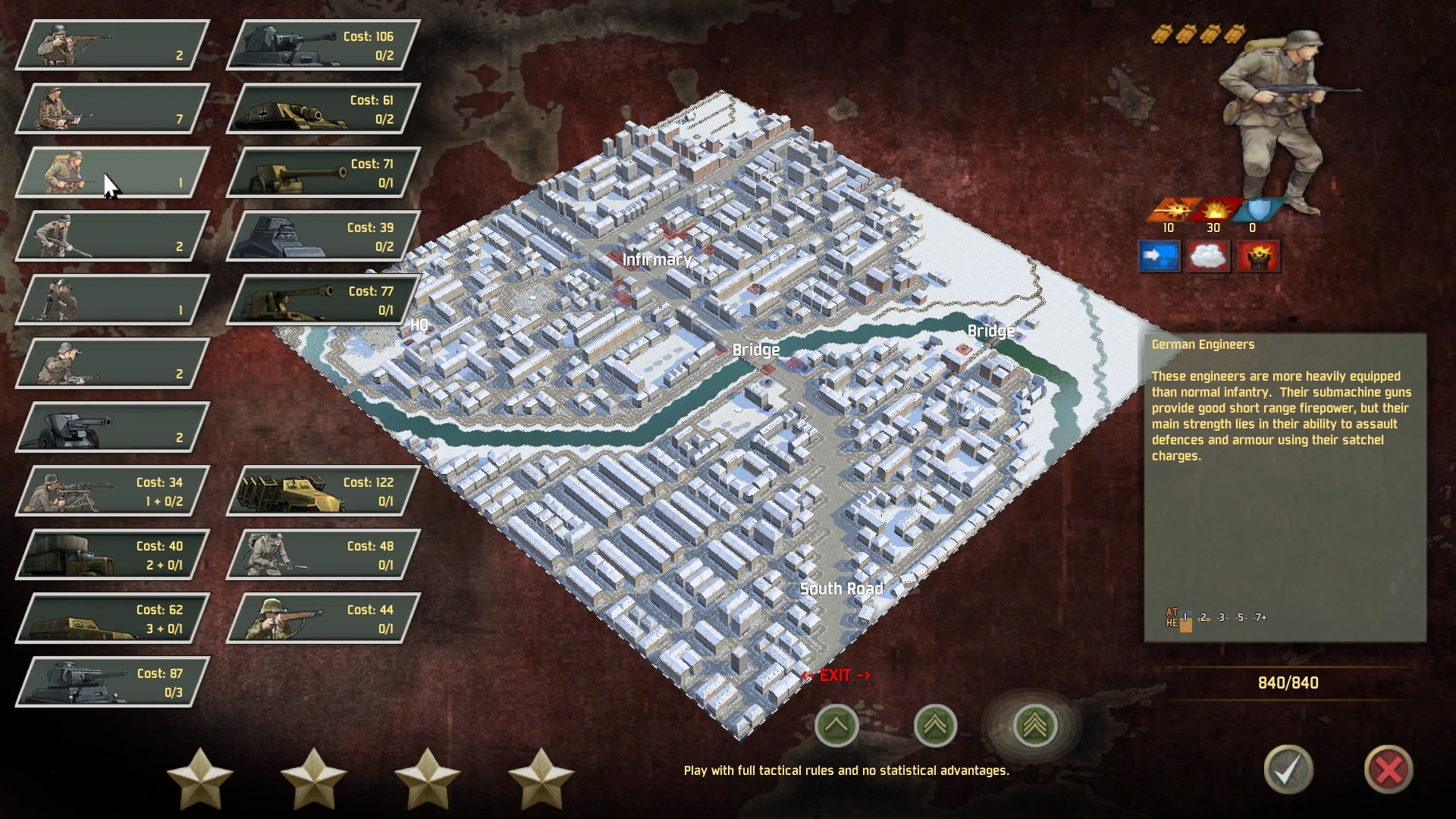
BA2 shipped with a splendidly straightforward and capable random map generator (one of its fruits is pictured above). In contrast HQWW2’s version is an astonishingly clumsy and confusing device. Several load screens and a multitude of button presses and slider tweaks stand between an eager skirmisher and a fresh battlefield in this title.
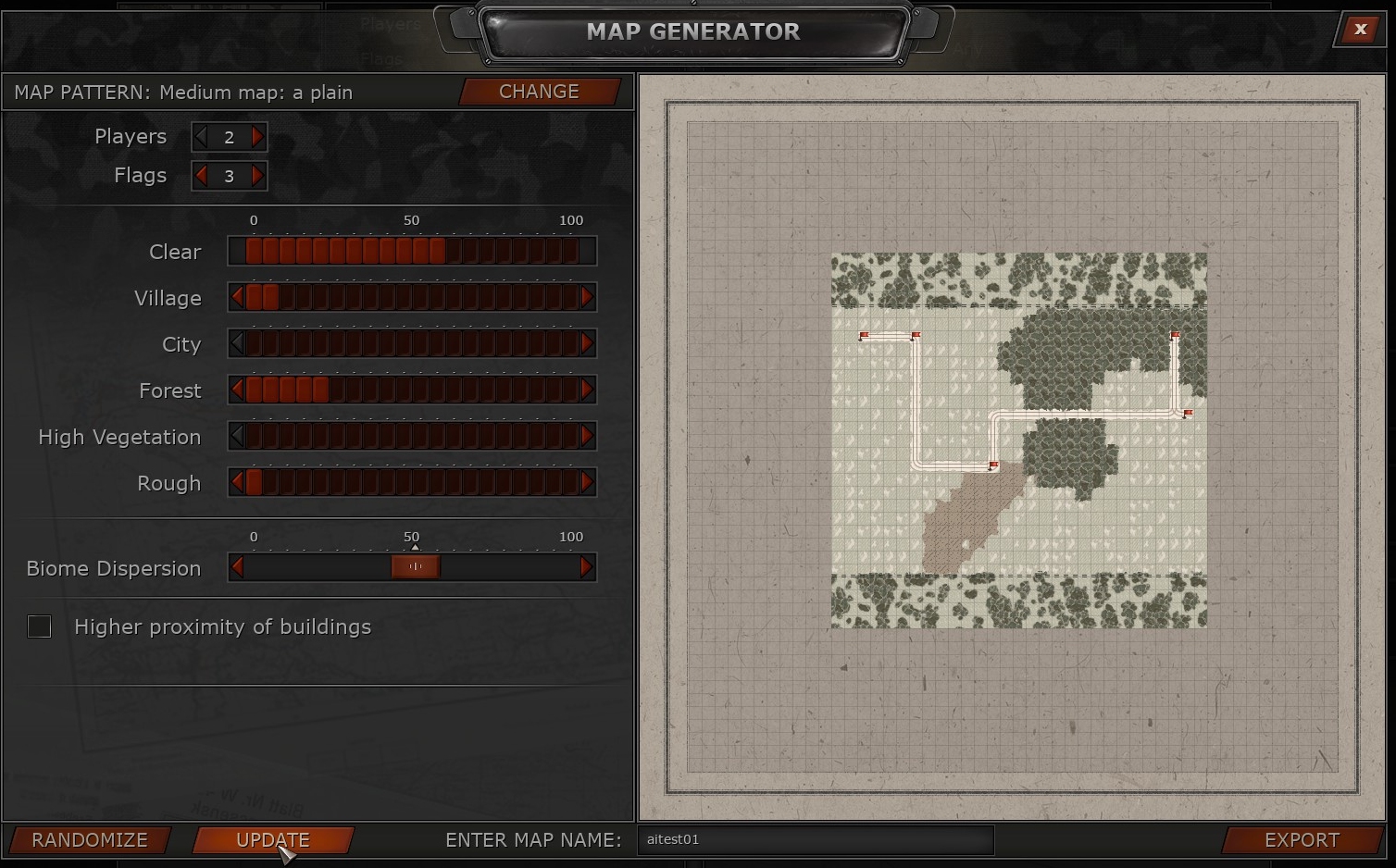
Jump through all the hoops and you’re not even guaranteed a pleasing venue at the end of the laborious process.

Back in the days when I was obliged to provide a percentage score with every review, I suspect I’d have awarded Headquarters: World War II one beginning with a 6. While there’s clearly a market for a workmanlike TBT with the feel of Battlefield Academy and the looks of Company of Heroes, anyone who holds wargames such as Steel Panthers, Close Combat, and Combat Mission in high regard, is sure to enjoy The Troop’s exciting and evocative take on Normandy liberation more than HQWW2’s somewhat staid and synthetic one.

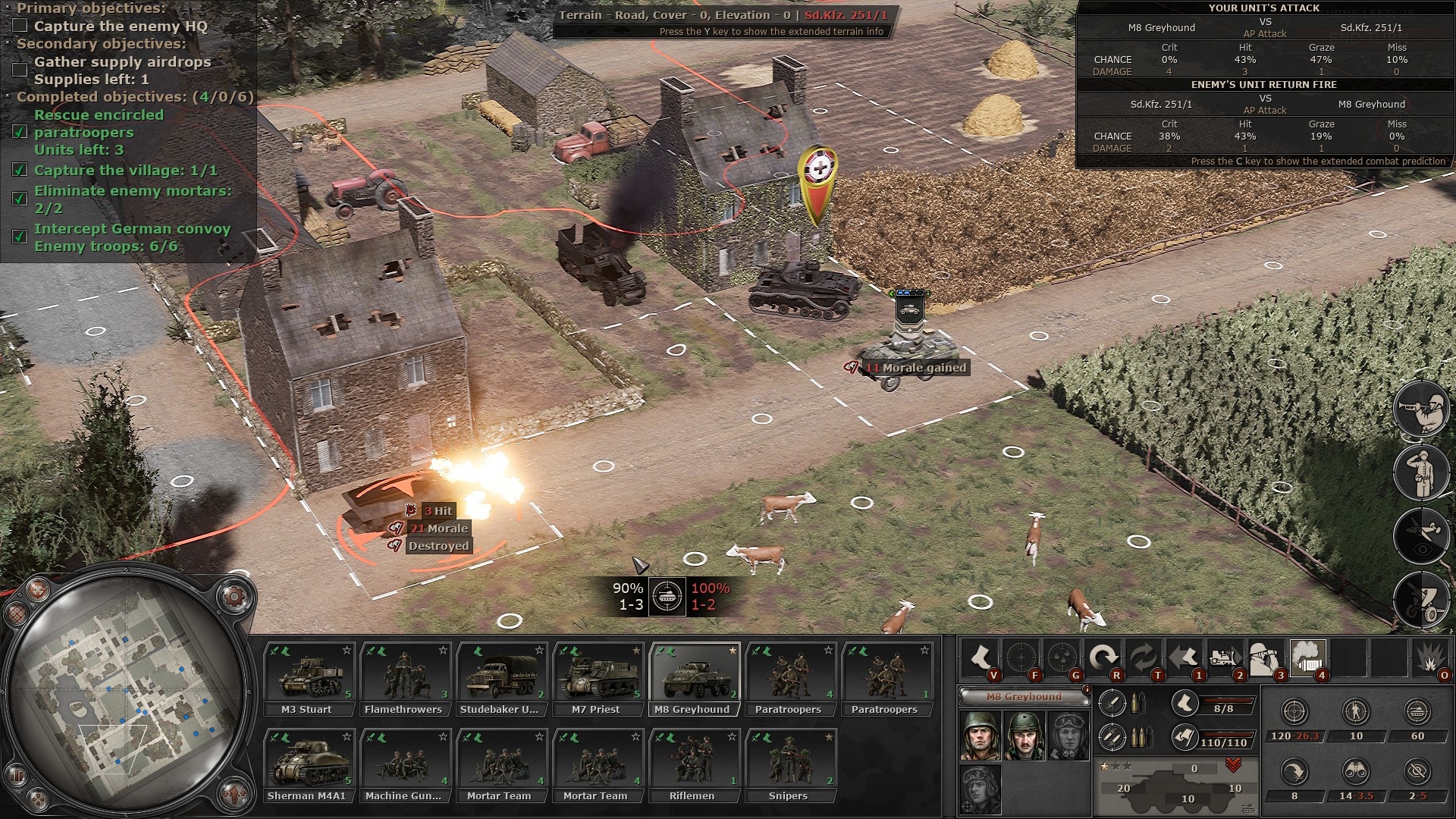
A) Not gonna lie: the mouse cursor included in the screencaps confused me on more than one occasion.
B) I’ve no idea what it does, especially on a timer, but I like the salute button on the right. I’m tempted to print out a copy and stick to my monitor’s bezel in order to press it whenever I feel a unit I’ve been micro-managing needs upbraiding.
C) Where is everybody? Hard into this Taylor Swift album?
Always good to hear your thoughts Tim. I pretty much agree with all of your comments other than the difficulty of finding cover – the shields that appear when you mouse over a possible destination seem to work well enough for me.
My main problem is how ‘gamey’ the whole thing is. Other than the points you mentioned, there’s a very early and obvious upgrade to scout units, which allows them to advance without fear of triggering overwatch. It doesn’t take a military genius to work out that when you combine this with the overpowered artillery (multiple shots per turn, freedom to move + board transport + leave transport + fire, mortars firing from inside buildings) the maps become something of a tedious cakewalk.
“the shields that appear when you mouse over a possible destination seem to work well enough for me”
I’ll remove that complaint. I hadn’t noticed the cover indicator toggle in the options menu!
“My main problem is how ‘gamey’ the whole thing is.”
Agreed. Arty, scouts, snipers… they all need serious nerfing.
I had only heard of this game in passing and didn’t even realize it was a tactics game. I had assumed it was going to be heavily focused on logistics and command management and had looked forward to see what it was like on release. This is rather disappointing but conceptually and, apparently, in execution.